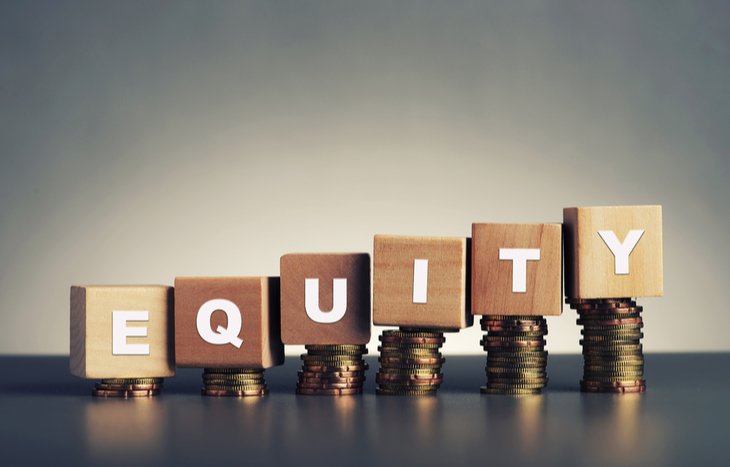What are Equities?
When you purchase stock in a company, you’re really purchasing an equity stake. That’s why stocks are also referred to as “equities” when talking about different investment vehicles. Equities are company-issued shares representing ownership in the company. They entitle the holder to the benefits associated with the financial gains of that company and the privileges that come with them.
People invest in equities because they have the ability to appreciate. Equity appreciation is how most people build wealth through their stock portfolio, retirement fund or asset investments. In theory, there’s no limit to how high the value of an equity can go, so long as the fundamental drivers of wealth are material.
Here’s what every new investor needs to know about equities: what they are, how they function and what they represent.

How do Equities Work?
When talking about stocks, it’s important to know where these equities come from. They don’t materialize out of thin air! Because they represent an equity stake in the company, the company needs to issue them. In doing so, it places a value on itself—or rather, it estimates its value and the collective market adjusts that value over time.
Say, for example, ABC Company becomes a publicly traded company through an IPO. When it hits the stock market, it will have 20 million shares available, priced at $2 apiece. This puts the company’s value at $40 million. If Jim buys 500 shares, he’ll have a $1,000 equity stake in the company. As the company grows and demand for its stock increases, the shares might trade for $5 each. Not only does the company’s total valuation increase to 100 million, Jim’s equity stake increases to $2,500.
Because equities represent a claim to the company’s financial performance, they can also decrease in value. If ABC Company performs poorly and the share price drops to $1, Jim’s 500 shares only represent a $500 investment. He maintains the same number of shares, but his investment in the company is worth less.
Common vs. Preferred Stock
Stocks or shares are broad terms for equity investments in a company. That said, there are different types of company shares: namely, common vs. preferred stock. While both represent the same claim to the company’s financial performance, they afford shareholders different benefits:
- Common stock comes with voting rights, giving shareholders a say in decision-making.
- Preferred stock lacks voting rights, but has first claim to assets if there’s a bankruptcy.
There are also different share structures to consider, including Class A, B and C shares, as well as founders’ shares. Again, what differentiates these shares isn’t their claim to equity, but rather the rights they bestow upon the shareholder.
Why do Companies Issue Equity?
When companies go public or issue shares, they’re effectively fundraising. Instead of going to the bank and getting a loan, they’re asking investors to support them financially. Issuing equity comes in contrast to issuing debt, which takes the form of a bond.
Issuing equity allows companies to access investor capital and use it to drive new growth and prosperity. In doing so, the company is able to reward its shareholders through stock price appreciation and in other ways, such as dividend payments. The process is cyclical: investors buy equity shares in a company, the company uses that money to grow, the stock price appreciates, which attracts more investors who buy more shares. The cycle repeats indefinitely (in a perfect world).
Typically, companies issue equity when they have a plan for it. At IPO, the plan is to pay back private and institutional investors that enabled early-stage growth. For established companies, equity can help finance asset acquisition, such as new equipment, land, machines, inventory or even other companies.
Companies can also buy back their own stocks (called a stock buyback). This doesn’t change the value of the company; however, it does raise the value of each investor’s equity shares. Conversely, if a company issues too much equity, it may dilute the value of a share to a level that’s unattractive to investors.
How to Measure Equity
The simplest measure of investor equity is how many shares are owned. However, equity is a broad term that needs context. There are many ways to look at equity when it comes to evaluating companies. Some of the most common measures of equity include:
- Book value. At the end of the day, the simplest measure of a company is its assets minus its liabilities. This is what the company is worth overall.
- Net asset value. The market value of the company, less liabilities, divided by the number of issued shares. This is effectively the stock price.
- Shareholders’ equity. The total amount every shareholder would receive if the company liquidates and pays off its debts.
Most of these metrics are readily available to shareholders performing fundamental analysis on companies. Each offers a unique perspective of valuation of a company, which informs the value of equity.
Why Invest in Equities?
Equities are the most popular asset class for a reason. Their appreciation potential alone makes them powerful contributors to wealth—not to mention their accessibility and liquidity. The abundance of different companies across different sectors also makes it easy to purchase equity in companies you understand and believe in. Many investors readily understand the concept of equity, which also makes these investments friendlier than something like annuities or bonds.
To find the next pick for your portfolio, sign up for the Trade of the Day e-letter below. The team at Trade of the Day provide daily stock picks, tips and insights.
There’s no better case for equities investment than a historical look at any composite stock index going back 5, 10, 20 or even 50 years. And you’ll see a trend that moves up and to the right. Sure, there are dips—but the chart doesn’t lie. Investment in equities will generate wealth and returns for investors.





